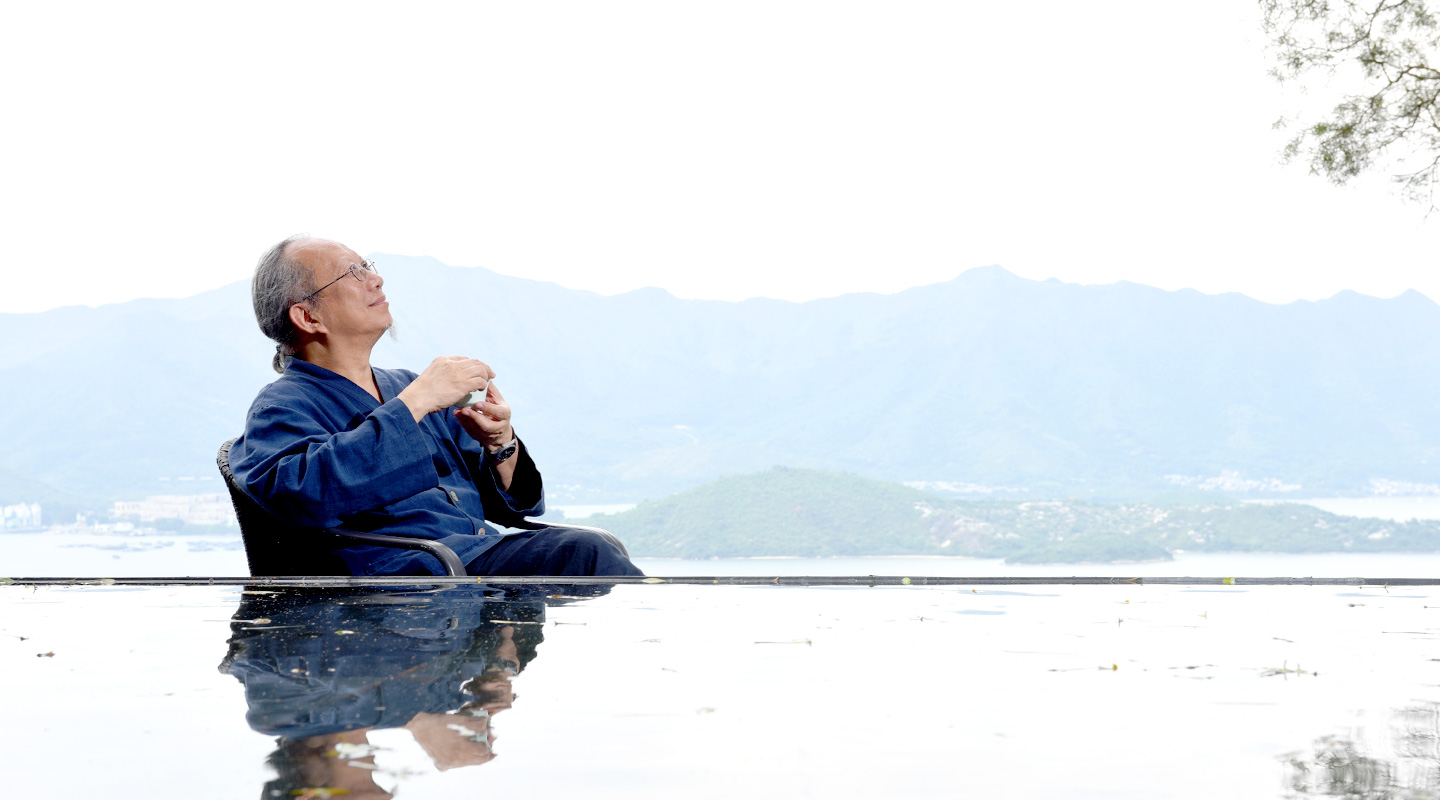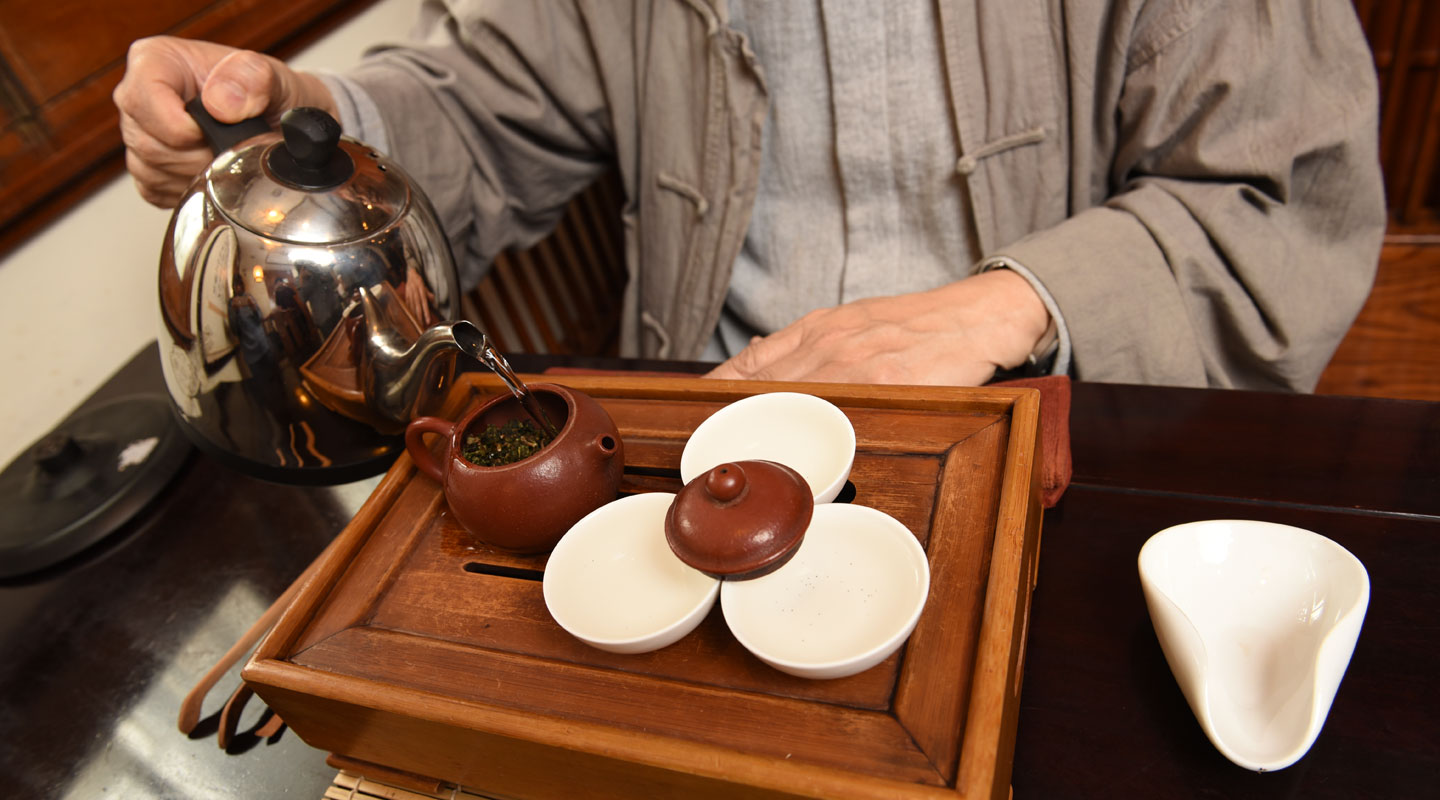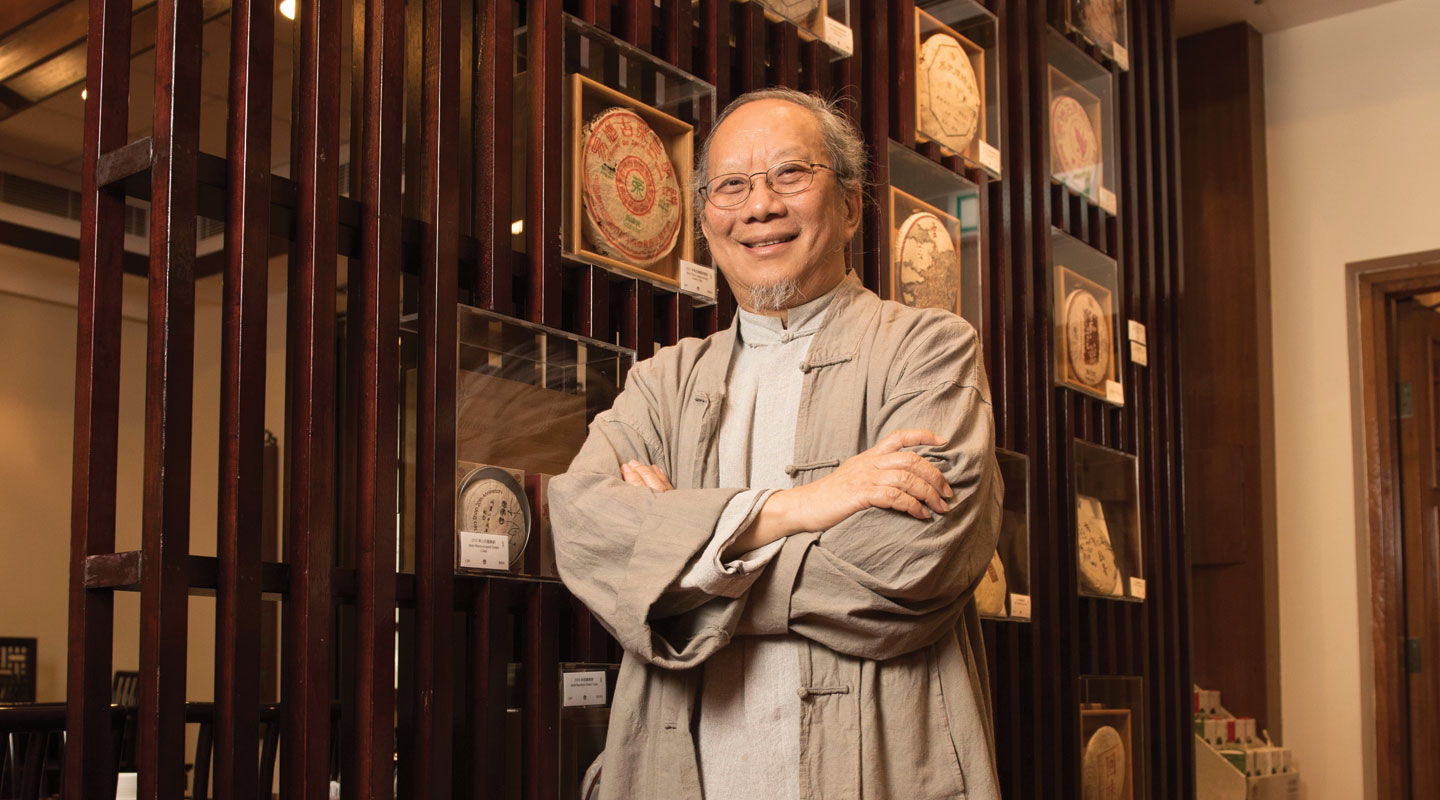Dear readers, With the launch of e-newsletter CUHK in Focus, CUHKUPDates has retired and this site will no longer be updated. To stay abreast of the University’s latest news, please go to https://focus.cuhk.edu.hk. Thank you.
Following Ip Wing-chi’s Olfactory Senses

Mr. Ip Wing-chi
Alumnus of Economics (1975) and Fine Arts (1977), New Asia College
Founder of LockCha, Council Member of China Tea Science Society, and Chairman of Hong Kong Tea Association
How did you and tea meet?
After graduation, I worked as an assistant researcher at CUHK’s Institute of Chinese Studies. The curator assigned me to study some purple clay teapots when Dr. Lo Kwee-seong approached us for a teapot project. In 1979, I organized the first tea ware exhibition in Hong Kong on CUHK campus. Dr. Lo and I visited the purple clay teapot factory in Yixing, met masters such as Mr. Gu Jingzhou and Mr. Zhu Kexin, and saw many beautiful teapots. Those couldn’t be directly imported from Yixing. We thereby searched far and wide for an importer and eventually found a state-owned export enterprise in Nanjing, resulting in the display of some exquisite teapots at Hong Kong’s Asia Arts Festival in 1981. I was particularly happy to have the honourable presence of the then Associate Director of the Nanjing Museum, Mr. Song Boyin, and the teapot master Mr. Gu Jingzhou at the event. Afterwards, Dr. Lo and I founded a company to manage the exhibits. In 1984, we even converted the Flagstaff House built in 1845 into the Museum of Tea Ware.
What drives you to the promotion of Chinese culture and the Tao of Tea?
The cultural ambience at New Asia College plays a crucial role in it. I was fortunate enough to have been lectured by renowned scholars such as Prof. Mou Zongsan, Prof. Tang Junyi, Prof. Jao Tsung-I and Mr. Chen Leishi. I enjoyed my bonding with Mr. Chen as we sometimes shared some Chaozhou kungfu tea in his office. Since then I have never stopped from embracing Chinese culture and should naturally want to contribute to its preservation and promotion. Drinking tea is a good conduit to help more people appreciate our culture. The road to promote tea culture has never been easy. I founded LockCha in 1991. When I opened the tea house in Admiralty in 2003, I was driven to the edge of bankruptcy because of SARS, only to be bailed out by some helping hands. The experience confirmed my belief in a saying by Mencius: A just cause enjoys abundant support.

How is tea a conduit of Chinese culture?
Tea drinking is part of life in Chinese culture and has deeper meanings. Take Chaozhou kungfu tea as an example. Traditionally a host would serve three guests in most instances, but only three small cups are prepared. The Confucian values of deference and respect to elders can be seen here. The tea brewing is solely prepared by the host. After boiling water, the host will put some tea leaves in the purple clay teapot and arrange the three cups in a triangle. The teapot, cups and leaves are rinsed when the hot water is ready. Afterwards, the host pours the tea into the cups evenly in a circular manner. The tea will be poured into every cup until the last drop. After a ceremony of invitation and deference within the group, the host will serve the guests according to seniority.
You’ve combined Tai Chi with tea. Tell us about it.
The Chinese believe in universal interconnectedness. A holistic approach is preferred to compartmentalized thinking. In addition to tea appreciation, I also like Chinese calligraphy and Tai Chi. They help develop my lateral thinking. The Chinese calligraphy brush, for instance, should be vertically held with the wrist in a suspended position. When I was still a beginner, I couldn’t maintain a suspended wrist while keeping the brush vertically. I learnt Tai Chi later on. To my surprise, the ball-holding posturing required by Tai Chi enabled me to keep a suspended wrist. Many friends complained that tea brewing hurt their wrists. I immediately thought of integrating Tai Chi with tea brewing. Now, those who practice this routine can enjoy tea brewing without hurting their wrists.
What’s the difference between the Tao of Tea and the Art of Tea?
The Tao of Tea is soul-nourishing. A cup of hot tea slows us down, helps us reflect in tranquility and comprehend the Way or Tao. The Art of Tea concerns the craft of brewing and tasting.
Tea tasting is slow living. Isn’t it anathema to city dwelling and the young generation?
It’s not easy for the young generation to slow down. Education is a path to it. I’m now working with Dr. Chan Man-hung on founding the Chinese Tea Culture Institute. We hope to offer general education courses on tea culture in tertiary institutions in order to initiate the young to tea appreciation.

If you want to enjoy a nice cup of tea at CUHK, where will you go?
As a member of New Asia College, I’d undoubtedly choose the Pavilion of Harmony to drink to the heaven and the earth. The concept of the ‘Union of Man and Nature’ is core to Chinese culture: The heaven, the earth and humans are interconnected. We should give up the sense of control and connect with nature, so as to make peace with ourselves and discover the way of living.
This article was originally published in No. 497, Newsletter in May 2017.